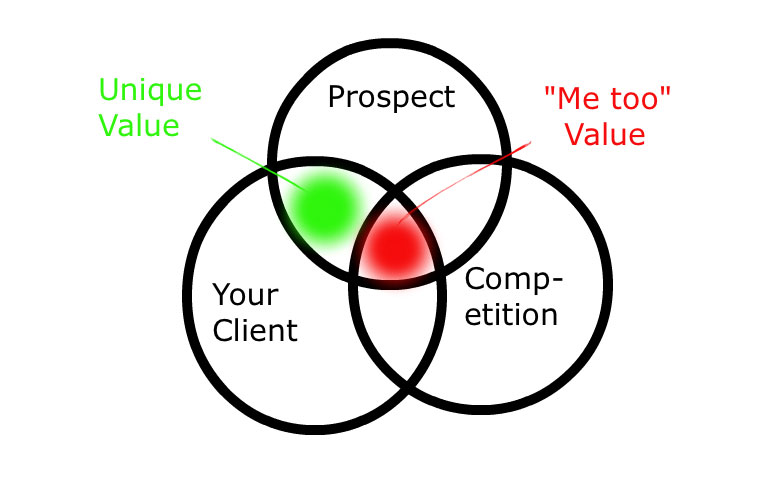 Even the most astonishing websites may fall short if the sales pitch your client presents lacks a distinctive edge.
Even the most astonishing websites may fall short if the sales pitch your client presents lacks a distinctive edge.
A remarkable promise, known as a Unique Value Proposition (UVP), is crucial as it distinctly illustrates why customers should choose your client’s offerings. It escalates sales which, in turn, boosts their enterprise as well as yours.
If the UVP is absent or underwhelming, you both miss out, handing victory to your competitors. This is where you can lend your marketing expertise to aid your clients in pinpointing and articulating a strong UVP.
Making Your Client the Obvious Choice
A UVP communicates the assured benefit to the customer. The most convincing UVP is distinct, succinct, and promises measurable results that set your client apart from others in the market. With such a UVP, you’re creating an irreplaceable value proposition.
A compelling website will address this straightforward inquiry: “Why choose to invest with you?”
A lackluster UVP leaves this question unanswered, commonly due to:
- information overload;
- failure to see through the buyer’s lens;
- inability to highlight what makes your client unique.
Generic content or jargon-filled descriptions typically lead to weak “me too” UVPs that mirror competitors without communicating true worth. It’s vital to ensure that your clients’ UVPs are distinct, relevant to potential customers, and credible.
Unveiling Intrinsic Value
Finding a UVP isn’t about creating value from nothing—it’s about uncovering existing value. As international business consultant Mark Wardell terms it, the value is there but needs to be discerned and aptly defined.
Utilize this straightforward yet proficient diagram to assist clients in distinguishing their unique selling points from their rivals.

The red zone represents overlapping benefits that customers value but aren’t unique, providing no competitive advantage.
On the contrary, the green section signifies exclusive benefits that your client provides, representing genuine distinctive value, persuading customers to partner with them instead of the competitors.
Insight Gathering Methods
Deciphering what prospects value requires observation of their environment and needs. Here are methods to collect this data:
Market Research Companies
Numerous research firms offer extensive studies yielding rich data; however, these are often accompanied by steep costs which may be impractical for smaller businesses.
Ideal Customers
Obtaining insights from clients is viable through social media, direct interviews, and surveys. Consider the following queries to extract meaningful information:
- What motivated you to engage with [company] initially?
- What do you love most about [company]?
- What service does [company] provide that others don’t?
- How would you recommend [company]?)
Entrepreneurs
Often, web professionals rely on business owners due to resource constraints. These owners might emphasize features rather than benefits. Your task is to delve deeper, from features to benefits, and finally to the ‘benefits of benefits.’ Utilize a probing technique with questions like “So what does this mean to your customer?” to drill down to the true value.
This line of questioning will lead you through a chain that starts with technical features and ends with benefits that could impact the UVP. Identifying these benefits, like speed and reliability, and ensuring your client can deliver on these promises, may well distinguish them from the competition.
Sparking Differentiation and Desire
Differentiation and desire are at the heart of increasing engagement and conversion rates. Consider this equation to weigh and categorize prospective values:
Perceived Benefits – Perceived Costs = Motivation
Rank how much the values matter to prospects using this scale:
- Indifference.
- Interest.
- Strong necessity.
Should a value rank as ‘3’, you’re set to cultivate differentiation and desire. This powerful pair cements an effective UVP, capturing the customer’s interest, challenging his existing perceptions, and leading him towards a change. It’s only when the prospect feels compelled to shift that your client can guide him towards making a confident choice.
Value Propositions that Convince
Below are compelling UVP examples that answer why prospects should choose them:
Champions: Renowned brands for less
Square: Immediate credit card processing
Mint: No-cost personal finance tools online
Verizon Wireless: The most extensive 4G LTE Network
Southwest Airlines: No baggage fees
Netflix: Instant streaming of movies
Discover Card: Earn 5% cash back rewards
Benefits Tailored for the Customer
When your clients approach you with under-defined UVPs, guide them to see from the perspective of their prospects and concentrate on the ‘what’s in it for me?’ aspect.
Designing websites that are driven by unambiguous, compelling UVPs empowers you to brand and market your clients more efficaciously, elevate their sales, and consequentially earn significant positive business karma.
Do you collaborate with clients on UVPs? Which approaches have you found effective? Share your experiences in the comments.
Featured image/thumbnail, concept of bright idea via Shutterstock.

